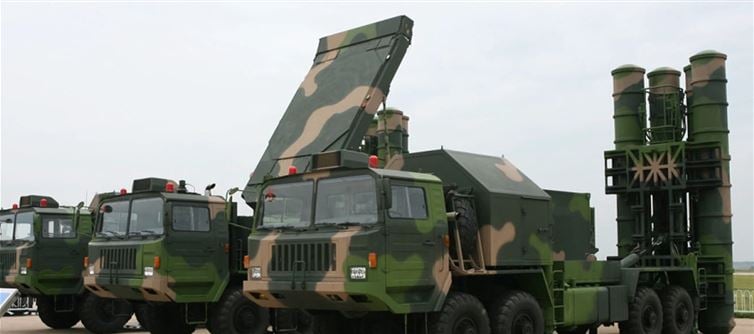
In a well-planned operation, the indian air Force used its Rafale fighter jets to launch SCALP cruise missiles. Known for their stealth, over 500-kilometer range, and terrain-hugging flight paths, these French-origin explosives glided through Pakistani airspace without being noticed. They hit with surgical accuracy. There were no intercepted missiles.
This operation is historic because of that.
The HQ-9 and LY-80 (HQ-16) air defense systems, which are Chinese-made platforms frequently marketed by Islamabad as cutting-edge defenses against aerial threats, were said to protect Pakistan's airspace. Modeled after Russia's S-300, the HQ-9 is advertised as having the ability to identify and eliminate threats in midair. However, these systems failed to detect the approaching missiles or respond when they did during Operation Sindoor.
The result: complete strategic paralysis.
India's use of sophisticated electronic warfare tactics, such as radar jamming, signal suppression, and decoys, made Pakistan's air defense system vulnerable. Pakistan's multibillion-dollar missile shield stood motionless, blind and humiliated in the seconds it took for indian missiles to destroy high-value terrorist targets in Bahawalpur, Muridke, Muzaffarabad, and Kotli.
This failure is not an isolated incident. It is the most recent in a series of humiliating breakdowns. Abbottabad was stormed by U.S. Navy SEALs in 2011 without any opposition. indian jets hit Balakot in 2019 without repercussions. An unidentified indian BrahMos missile penetrated 120 kilometers into pakistan in 2022. The Chinese-supplied systems failed each time.
Operation Sindoor, a real-time battlefield test that revealed both operational inefficiencies and structural problems with Pakistan's reliance on imported, faulty Chinese technology, is the most scathing finding yet.
Pakistan's integrated air defense system failed the first time it was tested, even after years of acquisition and improvements. The fact that the HQ-9 was unable to follow the incoming SCALPs points to either a disastrous detection failure or significant response delays.
In either scenario, it poses unsettling queries: To what extent is Beijing's export-oriented military equipment effective? And how prudent is it that Islamabad depends so much on it?
According to sources, the actual number of terrorist deaths may be higher than 90, but pakistan has acknowledged more than 50. Above all, the strike has shattered any trust that Islamabad might have had in its so-called "iron dome."
The operation is a technological indictment and a diplomatic humiliation for China. It serves as a sobering reminder to pakistan that security is not assured by defense agreements. Additionally, Operation Sindoor reinforces India's increasing proficiency in next-generation standoff warfare, which combines psychological dominance, accuracy, and stealth.
India destroyed more than just terrorist camps. It debunked illusions regarding South Asia's technological superiority, Pakistan's defense, and Chinese might.
Because the name of your systems doesn't matter in modern combat. The question is whether they are effective when the adversary has already arrived at your door. This week's "Made in China" provided yet another illustration of the trash and unreliability of Chinese-made technology, and Operation Sindoor ensured that the world took note.




 click and follow Indiaherald WhatsApp channel
click and follow Indiaherald WhatsApp channel